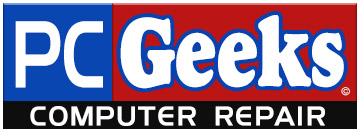The Differences Between Mac and PC Networking
In the modern world, staying connected is more important than ever. Whether you’re at home, in the office, or on the go, having a reliable network setup is crucial. When it comes to networking, two giants stand out: Mac and PC. In this blog, we’ll explore the key differences between Mac vs PC networking and provide some solutions to common networking challenges for both platforms.

Understanding the Basics
Before diving into the differences, let’s get a quick overview of what networking entails. Networking refers to the process of connecting computers and other devices together to share resources, such as files, printers, and an internet connection. Mac and PC both offer networking capabilities, but there are some distinctions to be aware of.
Mac Networking
Macs, developed by Apple, come equipped with a user-friendly networking environment. They often prioritize simplicity and design, making them popular among creatives and professionals in various fields.
Features and Benefits
Ease of Use: Macs are known for their user-friendly interface, and this extends to networking. Setting up a basic network connection is often straightforward, even for those who aren’t tech-savvy.
AirDrop: One of Mac’s standout features is AirDrop, which allows you to wirelessly share files, photos, and more between Mac devices. It’s a handy tool for quick and secure file transfers.
Bonjour: This technology by Apple simplifies network discovery and communication between devices. It’s particularly useful for finding and connecting to printers and other network resources without manual configuration.
Solutions
Time Machine Backup: Mac offers Time Machine, an automatic backup solution that makes it easy to keep your important data safe. Regularly back up your data to an external drive or a network-attached storage (NAS) device.
iCloud: Take advantage of Apple’s cloud storage solution, iCloud, to sync files across your Mac and other Apple devices seamlessly.
PC Networking
PCs, which run on various operating systems like Windows, offer a diverse range of networking options suitable for different needs and preferences.
Features and Benefits
Customizability: PCs come in a wide range of configurations, allowing users to build a networking setup that suits their specific requirements.
Homegroups (Windows 7 and 8): Homegroups allow for easy file and printer sharing between Windows PCs on the same network. However, this feature has been deprecated in newer Windows versions like Windows 10.
Workgroups and Domains: Windows systems provide options for workgroups (for smaller networks) and domains (for larger, managed networks) to control user access and network resources.
Solutions
Windows File Sharing: Utilize Windows’ built-in file sharing features to exchange files between PCs. Ensure you set up proper permissions to maintain security.
Network Troubleshooter: Windows includes a network troubleshooter tool to help diagnose and resolve common networking issues. This can be a lifesaver if you encounter connectivity problems.
Firewall and Security Software: Due to the prevalence of PCs, it’s important to have reliable security software and a firewall in place to protect your system from online threats.
Common Networking Challenges and Solutions
No matter which platform you use, you might encounter some common networking challenges. Here are a few solutions:
Slow Network Speed: If your network is sluggish, ensure that your router and devices are up to date. Consider using a wired connection for faster speeds.
Connection Drops: If you experience frequent connection drops, try restarting your router, updating its firmware, and checking for interference from other devices.
Cannot Access Shared Files: Double-check file sharing settings on both Mac and PC systems, ensuring that permissions are correctly configured.
Printer Issues: If you’re having trouble printing over the network, make sure the printer is connected to the same network as your devices and has the necessary drivers installed.
In the Mac vs. PC networking battle, both platforms provide some differences and solutions to common networking to meet your needs. Macs excel in their user-friendly approach, while PCs offer flexibility and customization options.
Contact us at PC Geeks to learn more about our computer repair services today! By letting us help you understand the differences and implementing the right solutions, you can enjoy seamless networking on either platform, staying connected with ease.
